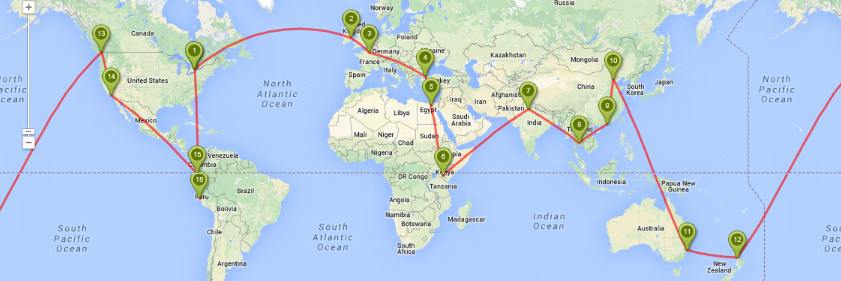Continuing on with the cruise, the next island we visited was Crete! This was the largest Greek island that we’ve visited and this was our second time here; our first visit was in 2010! The island is beautiful, and full of history found in traces of ancient Crete.


While on the island, we visited the most famous historical site: the Palace of Knossos. Fire destroyed this palace, once a center of Minoan culture during the Bronze Age, and shifted the seat of power to mainland Greece. Even after all this time, there are still traces of the amazing artwork and artifacts that made this palace so culturally significant in its prime.
The walls of the buildings around Knossos are full of colourful murals that provide a vivid snapshot of life in ancient Crete. The colours are incredibly vibrant and well-preserved.




As a society dependent on the ocean for food and trading, water has a big influence on these murals. Many of them depict various sea creatures and scenes involving the Mediterranean Sea.



One of the more well-known murals portrays a man leaping over a bull, suggesting the existence of a unique sport in ancient Crete. This mural showcases the artistry of the Minoan civilization, and hints at the connection between sport and legend.

Knossos is heavily linked with the ancient Greek myth of the Minotaur. The Minotaur was born from the union of Minoan Queen Pasiphae and a bull sent by the god Zeus. He was eventually locked away in a labyrinth built by the master architect Daedalus at the Palace of Knossos. According to the myth, King Minos of Crete imprisoned his enemies in the labyrinth for the Minotaur to consume, and its intricate design made escape impossible.
After his son was killed in Athens, Minos forced Athens to send seven young people to Crete every year as food for the Minotaur. Theseus, son of King Aegeus of Athens, volunteered to end the sacrifices. With help from King Minos’ daughter, Princess Ariadne, Theseus entered the labyrinth using a spool of thread to mark his path. He successfully killed the Minotaur and escaped by following the thread out. Theseus and Ariadne then left Crete together and sailed back to Athens.
Some believe that Knossos was the famous labyrinth itself, or at least the inspiration for the myth. The model of the palace does look like a maze (or labyrinth) from above!

We also saw the symbol of the bull all over Knossos as statues, murals, horn sculptures, and symbolic motifs.




The Heraklion Archaeological Museum, located close to the ruins, houses an extensive collection of artifacts from ancient Crete. Among the treasures are gold jewelry pieces, clay vessels, giant jars used to hold olive oil, tablets adorned with ancient writings, and a collection of other well-preserved items that offer a glimpse into the daily lives of the Minoans. It was really interesting to see how this ancient civilization was able to craft such elaborate items.









Knossos is not just a relic of the past, but an active archaeological dig site. Ongoing excavations allow visitors to witness the process of uncovering new layers of the Minoan civilization. This reminded me of many sites in Egypt, such as the Pyramids in Cairo, the Valley of the Kings, and Abu Simbel, as we were able to get up close to ancient ruins where new discoveries are still being made.


My love of mythology made visiting a place connected to a popular Greek myth incredibly exciting. It felt like I was right in the middle of one of the stories I’ve always enjoyed.

Leave a Reply